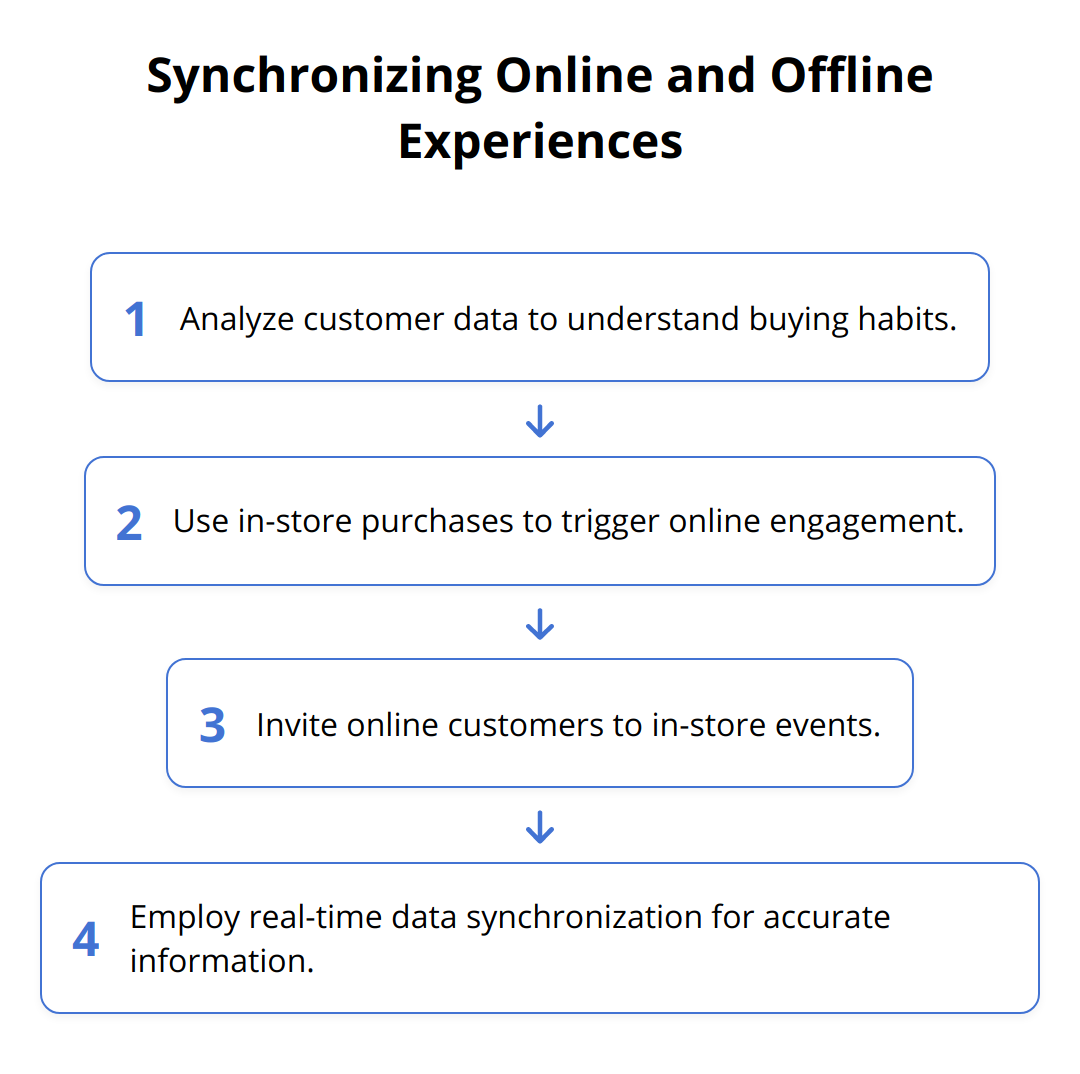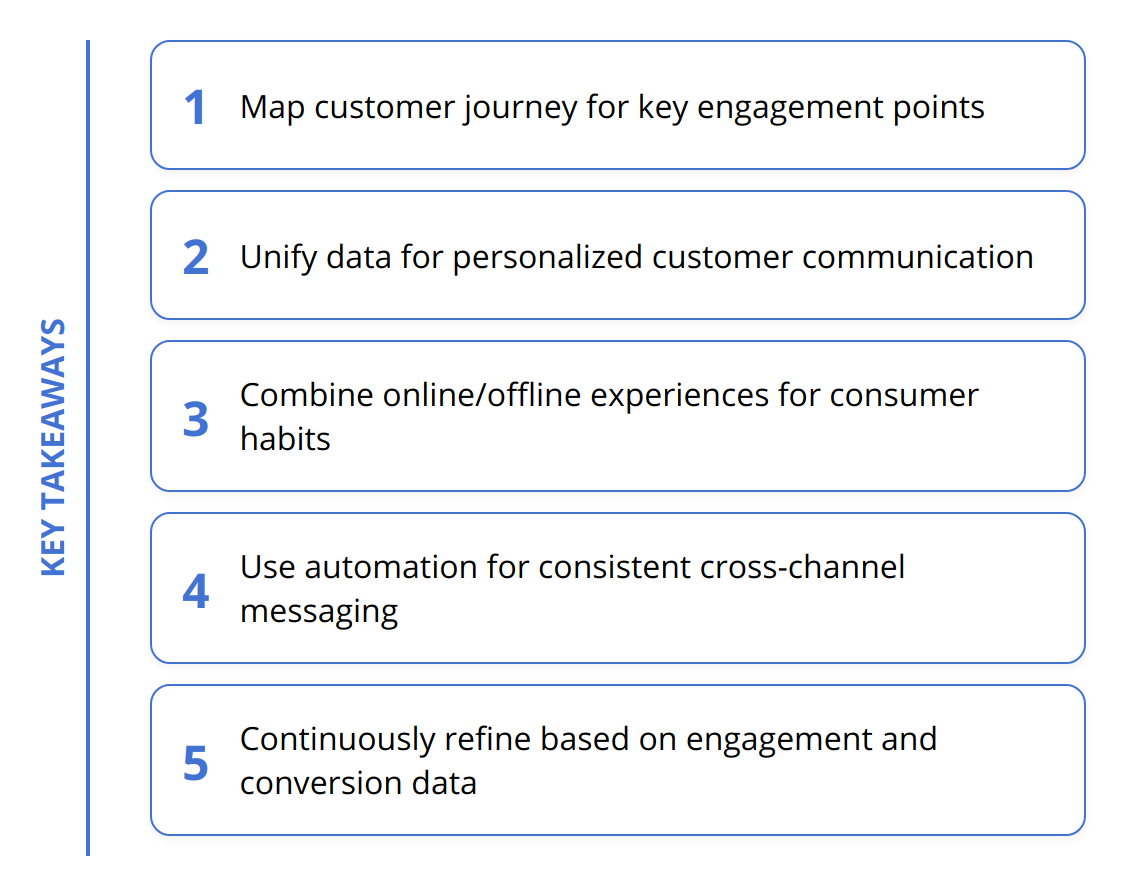In the dynamic landscape of digital marketing, understanding omnichannel marketing automation is more than just a trend—it’s a cornerstone of modern customer engagement. We at Emplibot recognize the power of a strategy that seamlessly interweaves various channels to deliver a unified brand experience. With consumers increasingly expecting personalized communication, mastering omnichannel strategies has become essential for businesses aiming to thrive.
Through this post, we will walk you through the crucial steps to implement, measure, and refine an effective omnichannel marketing automation strategy, enabling your business to connect with customers like never before.
What Is Omnichannel Marketing Automation?
Omnichannel marketing automation stands out as the gold standard for customer-centric businesses. It revolves around the idea of crafting consistent, personalized interactions across every channel a customer might use, spanning both digital and physical arenas. The importance of omnichannel strategies cannot be overstated; companies that master this are often rewarded with customer loyalty and increased sales.

Distinguishing Omnichannel and Multichannel Marketing
To get it right, it’s vital to differentiate omnichannel marketing from multichannel marketing. While multichannel marketing engages customers on various platforms, it often lacks cohesion and consistency. On the other hand, omnichannel marketing ensures all channels work together harmoniously, with the customer’s journey and preferences at the very core of this synchronized approach. The result? A smooth, integrated customer experience regardless of channel or device.
Crafting an Omnichannel Experience
Let’s talk about the architecture of an omnichannel strategy. It should foster a seamless transition as customers move between touchpoints—be it from social media to email, online to offline, or vice versa. An efficient omnichannel approach is built on several key components:
- Customer Data Insights: High-quality, actionable data enable personalized interactions. Leveraging data effectively can mean the difference between a lackluster and a standout customer experience. Tools like marketing analytics play a critical role here.
- Technology Integration: Central to omnichannel is the integration of your platforms and tools. This creates a single, unified view of the customer, essential for delivering a consistent message. Using robust CRM systems that sync with your marketing automation can catapult your strategy to new heights.
- Tailored Content and Communication: Understand your customers’ preferences and behaviors to customize content that resonates. Segmentation methods can help you create focused messages that will resonate more deeply with each subset of your audience.
- Measurement and Analysis: Set clear goals and KPIs, then measure relentlessly. Use the insights garnered to refine and optimize your approach. This isn’t a one-and-done deal; it’s an iterative process.
- Cross-Channel Coordination: Ensure every team member understands their role in delivering a flawless omnichannel experience. From customer service to sales, each department’s efforts should be aligned.

Incorporating these components into your marketing strategy is not just recommended; it’s a game-changer for customer engagement. Here’s what you can do to boost your omnichannel efforts:
- Synthesize Data: Unify customer data across channels for a 360-degree view that empowers better decision-making.
- Automate Smartly: Use automation technology judiciously to support, not replace, human touchpoints.
- Constant Iteration: Regularly review customer feedback to tweak and improve every interaction.
Embarking on the omnichannel journey might feel daunting, but the pay-off in customer satisfaction is well worth the effort. Remember, the aim is to build relationships, not just to sell—creating a seamless experience is how you get there.
Maximizing Customer Engagement with Automation
Building a comprehensive omnichannel marketing automation strategy hinges on successful customer engagement. To achieve this, a deep dive into customer data analysis is vital. However, any savvy marketer knows that data alone won’t cut it—it’s the actionable insights drawn from this data that can really ramp up engagement. With focused analytics, you can create campaigns that not only reach but resonate with your target audience on every channel they inhabit.
Let’s explore the actionable steps to elevate your omnichannel strategy:
Analyze with Precision
Targeted engagement starts with understanding your customers’ behavior and preferences. Analyzing customer interactions across all platforms allows you to pinpoint opportunities for engagement. But how can you translate a sea of data into actionable insights? Leverage a marketing automation platform that sifts through the noise, identifying trends and patterns crucial for tailoring your communication.
Achieve Superior Segmentation
Segmentation isn’t just about demographics. It’s about behaviors, preferences, and even predictive analytics. You must know who is buying what, when, and through which channels. With this knowledge, you can create micro-segments, resulting in hyper-personalized campaigns that speak directly to the customer’s needs, significantly increasing the likelihood of conversion.

Optimize with A/B Testing
No strategy is perfect on the first try. A/B testing various elements of your campaigns—from email subject lines to social media ads—will reveal what clicks with your audience. By testing and optimizing, you’re continuously improving the customer journey and, in turn, your return on investment.
Empower with Automation Technology
Automation technology should be the backbone of your strategy, not an afterthought. The right platform not only streamlines your processes but also enables real-time responses—a game-changer in today’s fast-paced digital world.
Trigger-Based Communications
Imagine a customer browsing your online store and leaving without a purchase. An omnichannel strategy powered by automation can send a follow-up email or app notification offering a discount on the products they viewed, potentially recovering a lost sale.
Unified Messaging Across Channels
Consistency is king. Your messaging must be cohesive whether a customer interacts with you via social media, email, or in-store. Automated workflows ensure that your brand voice is uniform, building trust and reliability.
Harmonize Online and Offline Interactions
The online-to-offline (O2O) gap is narrowing thanks to omnichannel marketing. Integrating these channels into one seamless experience is where businesses win or lose.
Leverage In-Store Experiences Online
An in-store purchase could trigger an online review request or a personalized email with related products. Equally, an online interaction can result in an in-store VIP event invitation, providing a tangible way to enhance the digital relationship.

Sync Data for Agility
Real-time data synchronization across all platforms means you’re always on top of inventory, customer queries, and sales opportunities. Inventory visibility, for instance, helps customers know if an item is available in-store, online, or for click-and-collect, adapting to modern shopping behaviors and improving satisfaction.
In-Store Technology
Employ in-store technology such as QR codes that can open up a world of online information and offers for customers, deepening the connection they have with your brand and enhancing the overall brand experience.
Quick tips to uplift your omnichannel automation:
- Always keep your customer’s journey and experience at the forefront.
- Personalize interactions at every stage and channel for maximum impact.
- Ensure data synchronization to provide a smooth transition between channels.
- Use real-time automation to be responsive and opportunistic.
- Regularly review and refine your strategy based on customer data insights.
By embracing these strategies, businesses can create a robust omnichannel experience that not only meets but exceeds customer expectations. Remember, omnichannel marketing automation is more than just software and data. It’s a strategic, customer-first approach that pivots on seamless, consistent, and responsive engagement across every touchpoint. And that’s what turns first-time buyers into lifelong brand advocates.
Is Your Omnichannel Strategy Working?
Evaluating the success of an omnichannel marketing automation strategy is vital for understanding its impact on your business. With a myriad of touchpoints, discerning the effectiveness of your efforts hinges on tracking the right metrics. Engagement rate and customer lifetime value take center stage, while conversion tracking across channels shines a spotlight on performance.
Engagement Tells the Whole Story
High engagement rates are a strong indicator that your content resonates with your audience. But don’t just look at likes and shares; dig into the depth of interactions across all platforms. For example, if customers frequently engage with push notifications or personalized emails, it’s evidence that your strategy aligns with their interests.
Look at metrics including:
- Time spent on your website from email links
- Social media interactions tied to specific campaigns
- Response rates to personalized SMS messages
Customer Lifetime Value, the Ultimate KPI
If a strategy only looks at short-term gains, it misses the bigger picture.

Customer lifetime value (CLV) speaks volumes about the long-term success of your omnichannel efforts. A high CLV means your strategy consistently offers value, encouraging repeat business. To boost CLV, focus on tailoring experiences and predicting customers’ future needs using predictive analytics.
Conversion Tracking Is Key
Without proper conversion tracking, you’re navigating without a compass. Match conversions with the original touchpoint to gauge successful channels and strategies. Use UTM parameters to track campaigns’ influence on website interaction, and set up goals in your analytics platform to attribute conversions accurately.
The Power of Analytics for Improvement
With the right analytics tools, continuous improvement isn’t just a goal; it’s a reality. Analyze trends, segment performance, and customer feedback to iterate on what works and eliminate what doesn’t. Leveraging tools such as automated reporting can save time while providing valuable insights, helping you refine and enhance your omnichannel strategy.
Quick Insights for Measuring Omnichannel Success:
- Monitor engagement metrics that reflect the true value of customer interactions.
- Prioritize understanding and improving CLV for sustained business growth.
- Employ comprehensive conversion tracking to identify effective channels and touchpoints.
- Utilize analytics tools for data-driven decisions and constant strategy refinement.
In conclusion, measuring omnichannel success is not just about the numbers but understanding the stories they tell. Continuous learning from metrics leads to an omnichannel marketing automation strategy that grows with your business and adapts to your customers’ evolving needs. The journey doesn’t stop here. Keep refining, keep measuring, and keep engaging.
Final Thoughts
The trajectory of marketing continues to veer towards customer-centric strategies, with emphatic focus being placed on personalization and customer journeys. As we’ve navigated through the intricacies of omnichannel marketing automation, it’s clear that the future belongs to brands that embrace these approaches. In striving to meet customer expectations and provide memorable experiences, businesses are not just recommended but encouraged to adopt sophisticated omnichannel automation techniques.

The core of this transformation hinges on personalization at every interaction. As marketing automation evolves, so does the opportunity to tap into deeper levels of customer understanding. The businesses that excel will be those that use every piece of data to shape experiences that feel bespoke to each individual. Remember, personalization is more than a name in an email—it’s about relevant content, timely engagement, and context-driven interactions.
The customer journey has taken center stage in marketing strategy. It’s about tracing the map of your customer’s interaction with your brand and ensuring that at every touchpoint, there’s a reason for them to continue their journey with you. Refining this journey through omnichannel marketing automation isn’t just beneficial—it’s transformative, turning casual browsers into loyal customers.
Moreover, embracing omnichannel techniques is not a distant goal but an immediate step for any forward-thinking business. The tools for implementation are already at your fingertips, with platforms like Emplibot easing the pressure. Emplibot supports businesses in building their blogs automatically, integrating SEO-friendly articles without lifting a finger. This level of automation opens new doors, offering more time to focus on other strategic areas of a business’s marketing approach.
Here are some tangible steps businesses should consider:
- Map out the customer journey to identify key engagement points.
- Invest in technologies that unify customer data for pinpoint personalization.
- Seamlessly blend online and offline experiences to reflect modern consumer habits.
- Make full use of automation to deliver consistent messaging across all channels.
In closing, the shift towards omnichannel marketing automation is not just a fleeting trend. It’s the embodiment of a changing market—one that’s more dynamic, responsive, and customer-focused than ever before. To navigate this landscape effectively, businesses must align their marketing strategies with the technologies that can bring these experiences to life. As customer preferences continue to evolve, one principle remains steadfast: the brands that prioritize meaningful connections will be the ones to leave a lasting impression.
The task at hand is clear: adopt, adapt, and advance your marketing approach. GUIDATA

